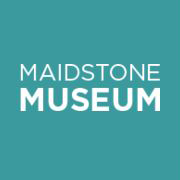In the final part of Vanessa Tothill’s examination of some of the more unusual scrolls in the Maidstone Museums’ collection, our Japanese Cataloguer looks at fascinating stone rubbings with unknown origins.
The final painting scroll that I will introduce is another ink rubbing of unknown origin. At a glance, this stone rubbing is a rather austere-looking, long text, written in Chinese characters. Although the text may look exotic and unfamiliar to most of us, it is actually a translation of the Gospel of Matthew, Book 5, from the New Testament, and describes The Sermon on the Mount. In the text, ‘Matthew’ is sounded out phonetically through a Chinese reading of the characters.
Portuguese and French Jesuit missionaries had spread Christianity in China during the 16th and 17th centuries. But it is thought that the first transmission of Christian teaching to China came from Persia via the Silk Road during the Tang Dynasty (618-907). Jesuits also introduced Christianity to Japan in the 1540s, and this new religion was tolerated for approximately a century before it was prohibited by the Shogunate and brutally suppressed. The Meiji government reformed legislation to secure religious freedom for Christians in 1871 and 1873, but prior to this, Christianity had been banned by the Tokugawa government for over 250 years.
A variety of examples of Japanese stone rubbings (takuhon 拓本) are known to exist. In the Henry Dyer Collection at the Mitchell Library in Glasgow, there is one Japanese ink rubbing of a memorial stone. The stele that inspired the rubbing was erected in 1836 to commemorate Gorô Nyûdô Masamune, a 17th-century swordsmith*. Although ink rubbings from stones were more common in China, they were also produced in Japan. Calligraphy and ancient texts were popular subjects for stone rubbings.
I think that the carved biblical text may have been intended for a Japanese audience. Japanese Confucian scholars were adept at reading and writing Chinese characters, and many of the Confucian texts produced in Japan were written in kambun, Sino-Chinese, or Chinese glossed for a Japanese readership. Plus, since Confucianism is an ethical system, it is not incompatible with Christian teachings.
The main clue that tells us that the author of the text of the stone rubbing was not Chinese is the engraved date of Meiji 13, 4th month (April 1880). This information reveals that whoever carved the stone or commissioned the carving was a Japanese Christian living under the reign of Emperor Meiji. The author of the text is named as Yunxi Chun 雲溪春 (Chinese reading of characters). This name sounds strange to Chinese scholars, and it is possible that the author was actually a Japanese calligrapher or translator called Unkei Shun雲渓春.
This scroll is fascinating because it manifests a complex network of cultural borrowings and transmissions. It is not clear exactly why, where, or by whom the stone rubbing was made, but it is fairly safe to assume that the carving of the stone itself must have been commissioned by a Japanese Christian with a Confucian education. Whether the stone carving still exists today, or if the stone rubbing is all that remains, is a source of great wonder.
*Catalogued by Rosina Buckland

